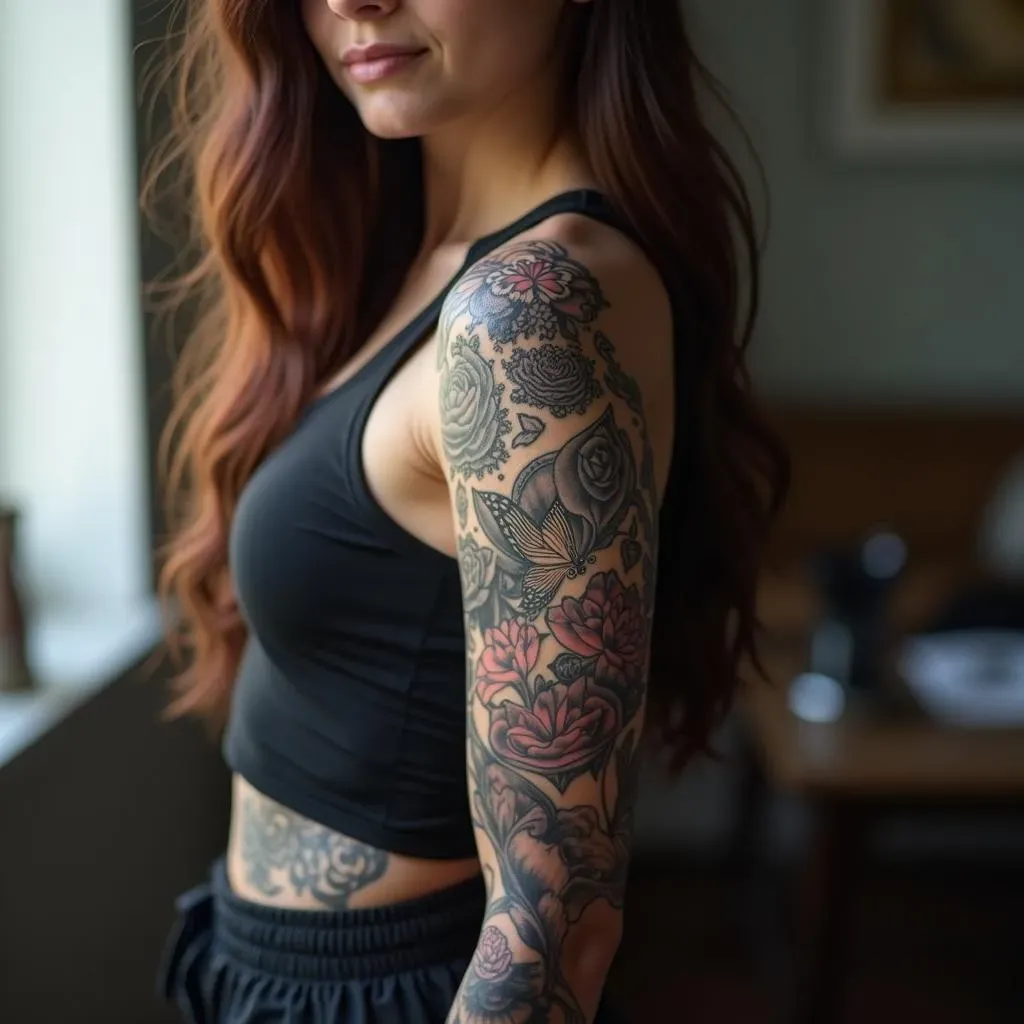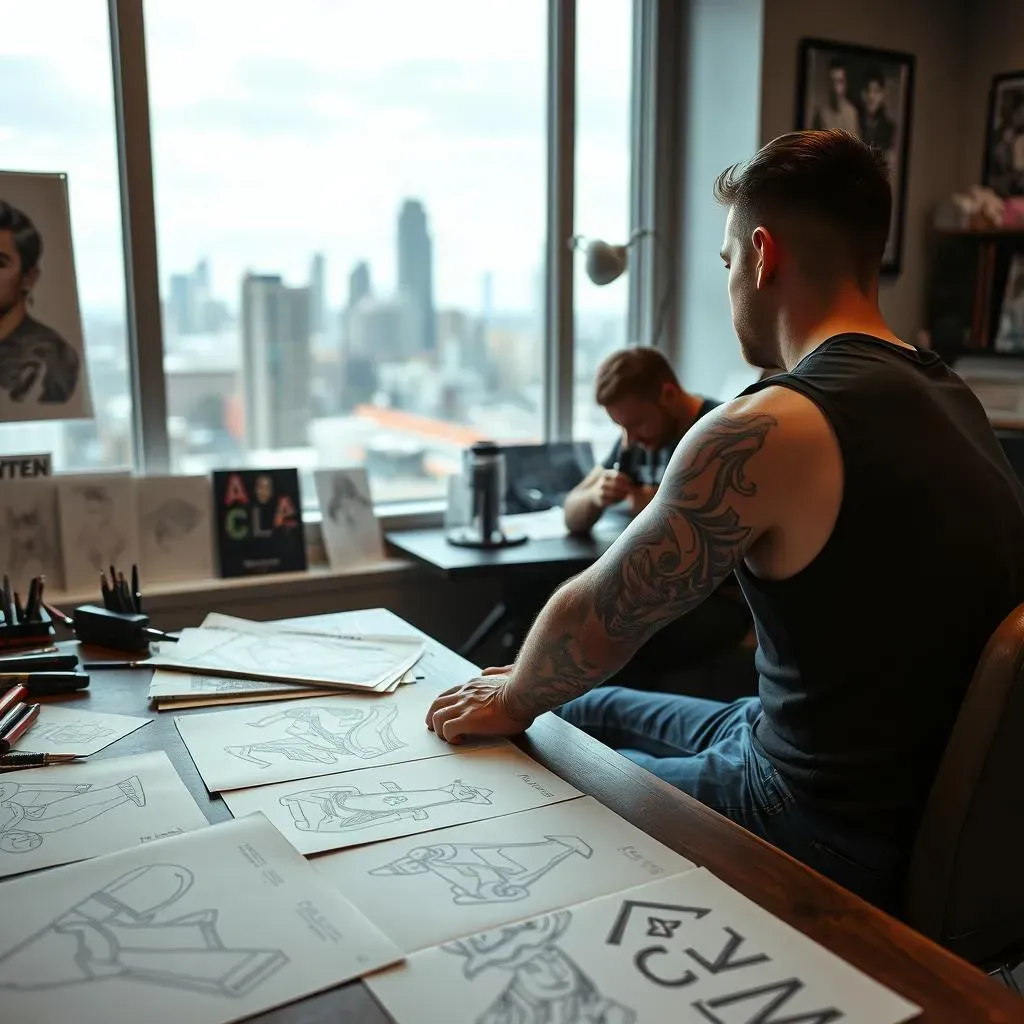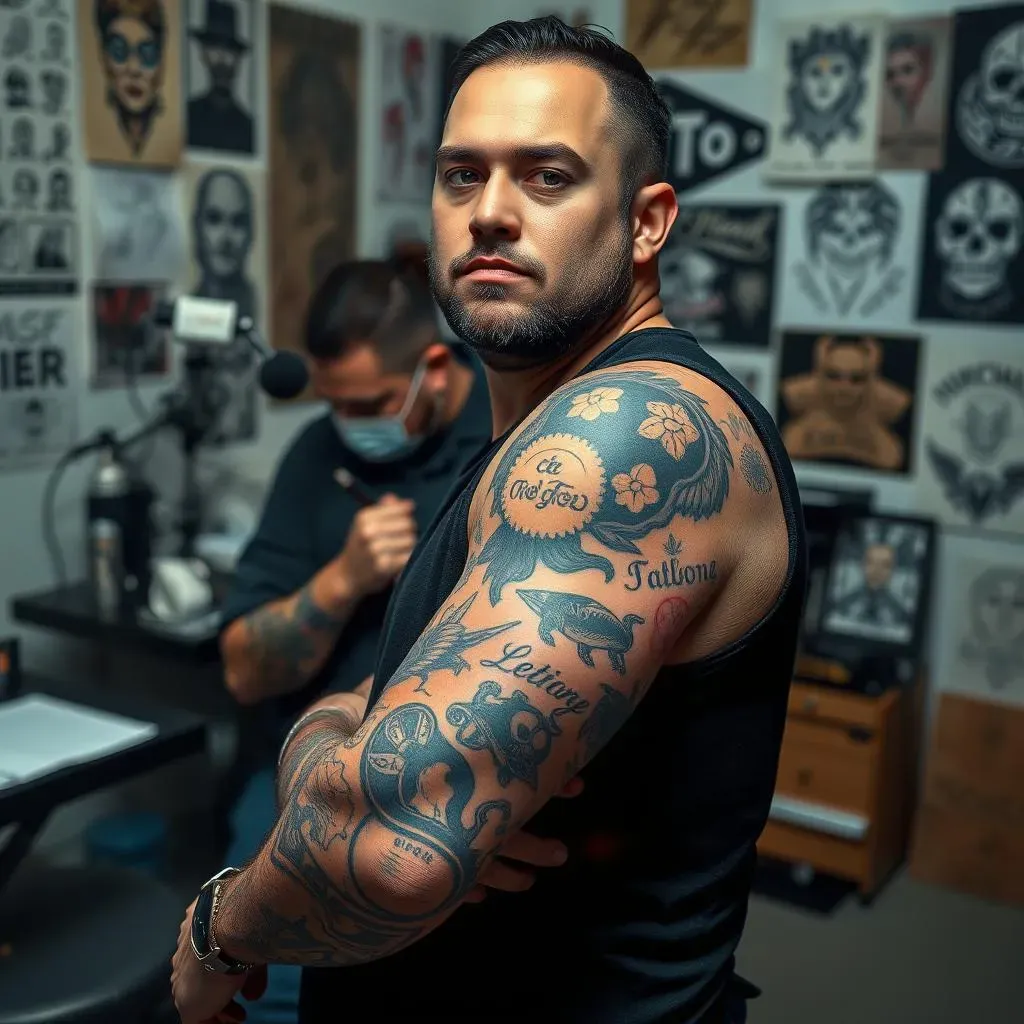Table of Contents
So, you're thinking about a sleeve tattoo? Cool! But maybe you're also wondering, "how many tattoos in a sleeve" does it actually take? It's not as simple as one big sticker, that's for sure. A sleeve can be a single, sprawling design that covers your arm, or it can be a collection of smaller, individual tattoos that all come together to create a cohesive look. Think of it like this: is a mural one painting or many small tiles? We'll look at how artists make these decisions, from the initial concept to the final design. We'll explore whether you can start with random tattoos and turn them into a full sleeve. Plus, we’ll chat about how many sessions you might need for all that ink. Whether you're planning your first tattoo or adding to your collection, this article will guide you through the process of creating your awesome sleeve tattoo.
Sleeve Tattoos: One Big Design or Many Small Ones?

Sleeve Tattoos: One Big Design or Many Small Ones?
The Single Vision Sleeve
let’s talk about the “one and done” approach. Imagine a mural on a wall; it's one big picture, right? That’s what a single-design sleeve is like. It's planned from the start to flow seamlessly from your shoulder down to your wrist (or wherever you decide to stop). It’s like the artist is telling a story across your arm. These sleeves usually have a theme, like a Japanese dragon winding its way around your arm, or a detailed nature scene that wraps around. The artwork is connected, and you won’t see any abrupt breaks. This requires a lot of planning beforehand with your artist. They’ll make sure the composition works with the shape of your arm.
It's a cohesive piece, not just a bunch of separate images slapped together.
The Patchwork Sleeve
Then, there's the patchwork style. This is where you have a bunch of individual tattoos that, over time, form a sleeve. Think of it like collecting stickers and putting them on your laptop. Each one is its own thing, but together they create a cool collage. Maybe you got a small heart one year, a star the next, and then a cool geometric pattern later on. Patchwork sleeves often start with one tattoo and grow organically. It's a great way to showcase different styles and artists, too. The challenge here is making it look intentional and not just a random assortment of tattoos. You can use filler, like dots, lines, or shading to connect the different images together.
It's like a visual diary of your life, with each tattoo marking a different time or experience.
Sleeve Type | Description | Planning |
|---|---|---|
Single Design | One cohesive image | Extensive planning with artist |
Patchwork | Collection of individual tattoos | Grows organically over time |
The Hybrid Approach
And guess what? You can also do a mix of both! You might start with a large centerpiece design, and then add smaller, related tattoos around it. For example, you might have a big skull tattoo on your upper arm, and then add smaller roses and vines that wrap around it down to your wrist. This gives you the best of both worlds – a focal point with a cohesive look, but the flexibility to add more over time. The key is to find an artist who understands how to make different elements work together.
Whether you go for a single mural or a collection of smaller pieces, it’s all about finding what best expresses you and your style.
Planning Your Sleeve: How Many Sessions?

Planning Your Sleeve: How Many Sessions?
The Time Factor: It's a Marathon, Not a Sprint
so you've got your design sorted, now you're probably wondering how long this whole tattoo sleeve thing is going to take. Well, it's not a quick trip to the store, that's for sure. Tattooing a sleeve is usually a process, not a single session. Think of it like building a house, you don't finish it all in one day, right? The number of sessions depends on a bunch of things like the size of your sleeve, the complexity of the design, the artist's style, and how well you handle the process. A simple, less detailed sleeve might only take a few sessions, while a super intricate one with lots of color and shading could take many sessions over several months.
It’s all about patience and working with your artist to create a masterpiece on your arm. Remember, rushing it isn't a good idea; you want to make sure it's done right.
Breaking It Down: What to Expect
Each session usually lasts a few hours, depending on your pain tolerance and how long the artist can work effectively. It’s better to have shorter, more focused sessions than to try to power through a marathon session that leaves you and the artist exhausted. After each session, your skin needs time to heal, usually around 2-3 weeks. This means you need to factor in healing time between sessions. Also, keep in mind that your artist might have a busy schedule, so you will need to book sessions in advance. It’s a bit like planning a road trip, you need to map out all the stops and breaks along the way.
Communication is key, talk to your artist about your expectations and their recommendations so you’re both on the same page for the entire process.
Factor | Impact on Sessions |
|---|---|
Size of Sleeve | Larger sleeves require more sessions |
Complexity of Design | Intricate designs take longer |
Artist's Style | Some styles are faster than others |
Your Pain Tolerance | Shorter sessions if you tire easily |
Healing Time | 2-3 weeks between sessions |
Can You Turn Random Tattoos into a Sleeve?

Can You Turn Random Tattoos into a Sleeve?
The "Oops, I Got a Tattoo" Scenario
so maybe you weren't planning a sleeve from the start, but now you've got a few individual tattoos scattered on your arm. It happens! Maybe you got a small anchor on a whim during a beach trip, or a band logo because you were super into that band at the time. Now, you're looking at your arm wondering if you can actually make this collection of random ink into something that looks like a real sleeve. The good news is, it's totally doable, but it might take a bit of work and a skilled artist.
It's like having a bunch of mismatched puzzle pieces and trying to create a coherent picture. It's not impossible, just requires a bit of creativity and planning.
Connecting the Dots: Filler and Backgrounds
The key to turning a random assortment of tattoos into a sleeve is to use filler and backgrounds. Think of filler as the glue that holds everything together. This can be anything from dots and swirls to geometric patterns or even just simple shading. The goal is to create a visual flow between your existing tattoos. Backgrounds are also super important. They provide the canvas that makes all the tattoos look cohesive. For instance, you can add clouds, water, or abstract designs that wrap around your arm and tie everything together. A skilled artist can use these elements to make your random tattoos look like they were meant to be part of a larger piece.
It’s all about making those individual pieces feel like they belong together, not just random images floating around on your arm.
Element | Purpose |
|---|---|
Filler | Connects individual tattoos visually |
Backgrounds | Creates a cohesive canvas |
Skilled Artist | Essential for making it all work |
The Artist's Touch: Finding the Right Person
Choosing the right tattoo artist is crucial when transforming random tattoos into a sleeve. Not every artist is skilled in this, so make sure to check their portfolio and see if they've done similar work before. Look for an artist who is comfortable working with different styles and who has a good eye for composition. They should be able to look at your existing tattoos and come up with a plan to make them work together. Don't be afraid to share your vision and ask for their input. A good tattoo artist will be a partner in this process, not just someone who does the work.
Ultimately, turning your random tattoos into a sleeve is a journey, but it's one that can result in a truly unique and awesome piece of body art.
Wrapping Up Your Sleeve: It's All About the Ink Journey
Figuring out "how many tattoos in a sleeve" isn't about a specific number. It's about the story you want to tell, and how you want that story to flow on your arm. Whether it's one large piece or a collection of smaller ones, the key is to plan it out, work with your artist, and enjoy the process. A sleeve is a big commitment, but it's also a pretty awesome way to express yourself, so take your time, do your research, and get ready for an amazing piece of art you can wear every day.